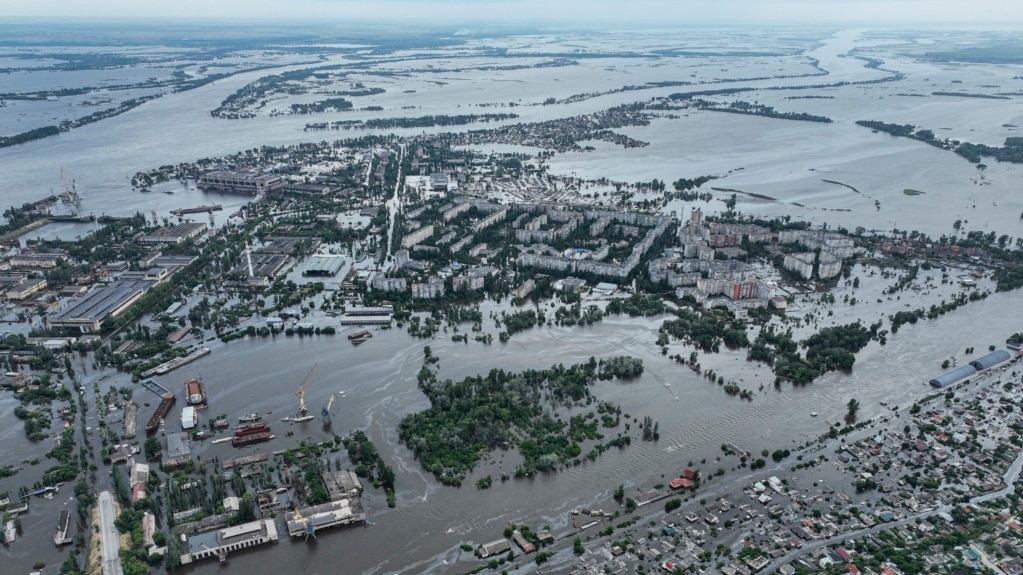The destruction of the Kakhovka Dam in Ukraine caused widespread flooding and might cause long-term environmental damage.
The Associated Press described some of the effects on the Dnieper River area recently. Here is what the AP found:
Short term effects
There are six dams along the Dnieper River. They were designed to operate together, so that water levels would remain more or less the same throughout the year. When Russian forces seized the Kakhovka Dam, the system fell into disrepair.
Whether done on purpose or carelessly, the Russian forces permitted water levels to rise and fall uncontrolled. They dropped dangerously low in winter and rose very high when snow melted, and spring rains filled the reservoir.
Since the dam’s collapse, the running waters have unburied landmines, destroyed weapons and ammunition, and carried 150 tons of machine oil to the Black Sea. Whole towns were underwater, and thousands of animals died in a large national park now under Russian occupation.
Oil can be seen on the water around flooded Kherson, the capital of southern Ukraine’s province of the same name. Homes smell of rot as cars, first-floor rooms, and underground floors remain underwater. Large oil slicks can be seen across the river from the city’s port and industrial buildings, creating a new pollution problem for the Dnieper.
Ukraine’s Agriculture Ministry estimated 10,000 hectares of farmland were underwater in the territory of Kherson province controlled by Ukraine. It said, “many times more than that” in territory occupied by Russia.
Farmers are already having problems. Dmytro Neveselyi, mayor of Maryinske village, said everyone in the community of 18,000 people will be affected.
“Today and tomorrow, we’ll be able to provide the population with drinking water,” he said. After that, who knows. “The canal that supplied our water reservoir has also stopped flowing.”
Long term effects
The water level began to decrease on Friday, showing the environmental damage.
The reservoir could hold 18 cubic kilometers of water. The Kakhovka Dam was the last along hundreds of kilometers of the Dnieper River that passed through Ukraine’s main industrial and agricultural areas. For many years, the Dnieper carried water containing industrial and agricultural chemicals which settled in the soil at the bottom of the reservoir.
Ukrainian officials are testing the soil for poisonous substances. It risks turning into poisonous dust with the arrival of summer, said Eugene Simonov. He is an environmental scientist with the Ukraine War Environmental Consequences Working Group, a non-profit organization of environmental activists and researchers.
The amount of long-term damage depends on the movement of the front lines in an unpredictable war. It is unclear if the dam and reservoir can be brought back or if the land will become what it once was.
Kateryna Filiuta is an expert in protected environments for the Ukraine Nature Conservation Group. She said it will take 10 years for the plant and animal populations to return and adjust to the new environment, and possibly longer for the Ukrainians who live there.
In Maryinske, a farming community, people are going through records to find old water sources.
“Because a territory without water will become a desert,” the mayor said.
All of Ukraine will have to think about either rebuilding the reservoir or thinking differently about the area, its water supply and its plants and animals.
Filiuta said, “The worst consequences will probably not affect us directly, not me, not you, but rather our future generations, because this man-made disaster is not transparent.”
I’m Gregory Stachel.

